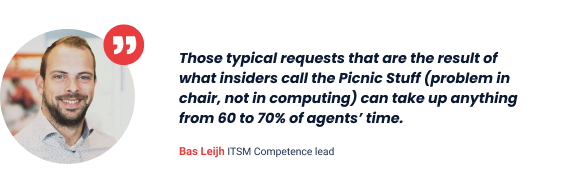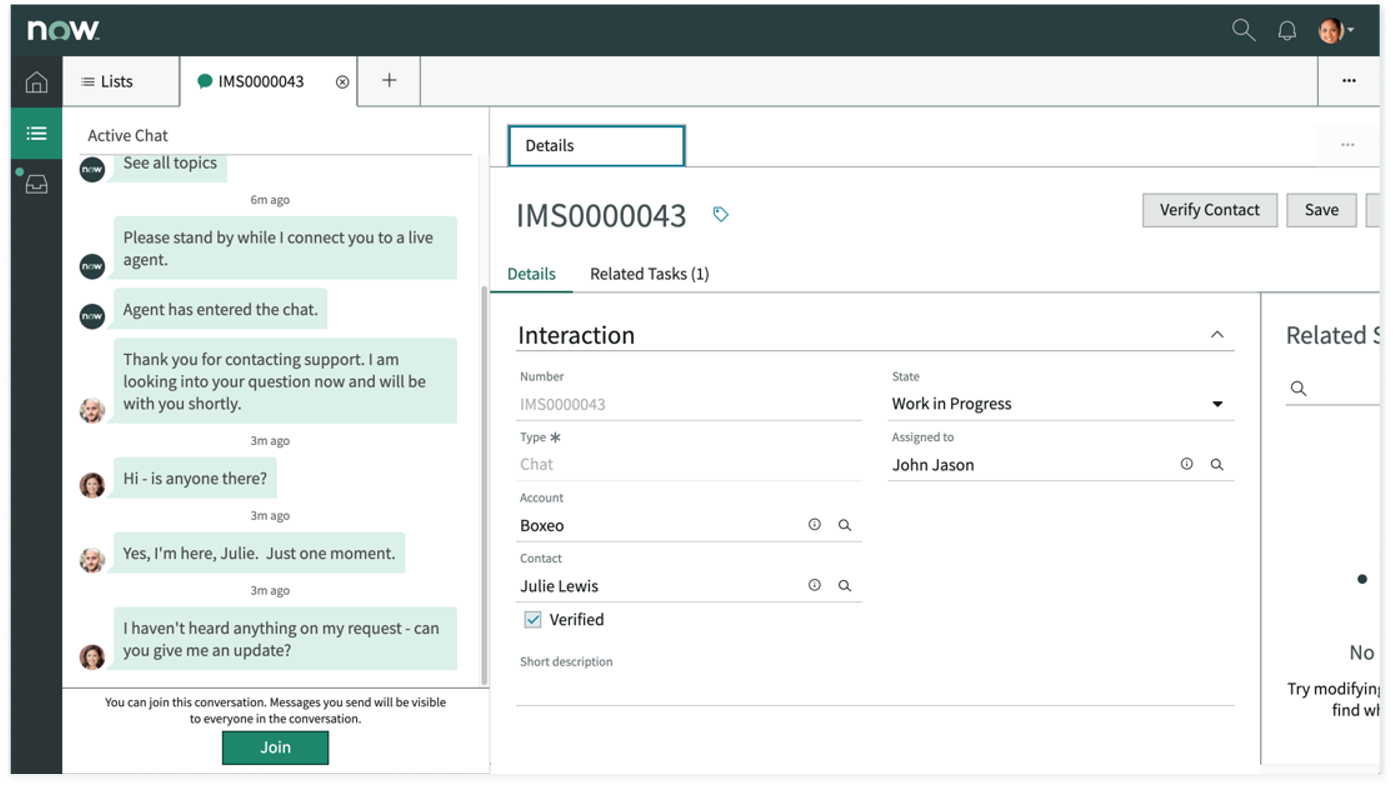3 ways to boost service desk agent job satisfaction and productivity

Any IT customer who has been part of the recent innovations in the B2C world will expect nothing less than the same speed, availability and comfort from their IT services. All 24 hours of all the 7 days of the week. It means that service desk agents are increasingly under considerable pressure to do more and do it better and faster. A bigger outcome is expected from a similar or smaller volume of resources. How to make sure your IT services remain up to par without having to increase headcount? By rethinking the importance of your service desk and boosting agent job satisfaction and productivity through automation.
Rethinking the importance of ITSM services
In a world in which IT services are taken for granted—like water from the tap—companies are willing to make considerable investments in such things as DevOps and project management (with immediately visible gains), less in their water mains and piping.
After all, as long as there’s water nobody complains. It’s only when we open the tap and hear the shuddering of the pipes—not that of water running out of the tap—that we start wondering if we need to do something about those rusty pipes.
Getting real added value out of ITSM requires a rethink of the system. Yet, we’re stuck in the paradox that everybody thinks they ‘know’ ITSM. The water is still flowing, but there’s nobody around to tackle the really important question: is this still the best or smartest way to do things?
Why put agent job satisfaction first?
Looking into ways in which automation can boost your IT services, without increasing headcount, we soon discovered that there’s even more to be gained from automation, if you can directly link IT service improvement to employee job satisfaction.
The job of service desk agent is considered a starter’s job. Yet, ironically it is one of the most important jobs in any company. These are the people who have the most contact with your users: be it colleagues within the same organization or a customer. The agents are your IT department’s face to the world. Their performance is the first litmus test of your service performance.
The arithmetic is as easy as it is obvious: the better your agents can work, the more tickets they can fulfil. And the more streamlined their workday, the happier your service desk agent and by extension your service desk user, whose issue is resolved fast.
Boost agent satisfaction with…
1. Agent workspace – Make work easier for agents
Up till now, agents have had to find answers to questions through the back end. It made their life on the service desk difficult and complicated.
By providing agents with their own workspace—a user-friendly, one-view screen—that includes all relevant information such as ticket history and knowledge items, they can find the information they need at a glance. Using AI functionalities, such a workspace automatically proposes resolutions. It enables agents to get their work done efficiently and significantly cut back time to resolve.
Added benefit for the agent is that, instead of having a tab open for every question, with workspace, the agent has just one tab open the whole day. What’s more, the workspace can be fully integrated with all conversations and fully branded so that it ties up with what you are as organization.
2. Shift left – Cut back the agent workload
Cutting back your agent workload is key to improving service quality and job satisfaction. We’ve found out that at no less than 80% of the service desks, workload seriously impacts agent job satisfaction.
When we first start with customers, we always ask them to list the three most often occurring questions or incidents to their service desk. Our next question is: How much time does the service desk agent spend on these three and where can we automate?
The answer appears to lie in the fact that as much as 20% of all traffic to a service desk regards run-of-the-mill questions, such as: How do I reset my password? How do I add up in Excel? Automation of such requests—whatever the level of maturity of your ITSM—will free up your agents to spend time on the issues that require serious attention.

In the ideal world, service desks should make a total shift-left movement, with as much knowledge as possible going to the front end. In this way, service desk efforts to respond to frequently asked questions are decreased to a maximum. With a self-service option needing no human intervention and with search results that are not only what you’re looking for, but also offer out-of-the-box solutions.
For the time being, especially now that AI functionalities are developing even further, the most important feature of automation is the introduction of the chatbot. Such a bot learns from repeat requests and recognizes the best path to resolution that should be followed.
Two further steps in continuously improving the employee experience through automation are the use of natural language understanding and the ability of the chatbot to connect to its complete environment, including SharePoint, Teams, WhatsApp and more.

3. Predictive/agent intelligence – Boost agent performance
Predictive intelligence has everything to do with identifying areas for improvement and detecting bottlenecks before they occur using data analytics and AI.
Predictive intelligence helps reduce the load on the service desk and enables agents to do what they are best at doing. For instance, if the service desk routes a certain ticket type to the same group over and over again, the system will recognize this and route tickets directly, thereby by-passing the service desk.
Such instant routing results in first-time-right and a lower mean time to resolve. Similarly, you avoid large volumes of calls if—based on predictions for something you know will happen—agents can make sure that knowledge items are in place and updated. If needed, they can communicate proactively to those users who might be impacted.
Most importantly, it helps make your agents more intelligent by providing with breakdowns and forecasts that makes service coverage transparent. By providing them such transparency, in turn, agents can set off whether what was predicted with what actually happened and tweak the quality of rules. In this way, agents and AI are boosting each other’s intelligence.


Future-proofing ITSM with ServiceNow
IT service delivery is a vital part of any organization. Over the last decade the delivery has shifted from hardware focused to cloud focused. In its turn, management of these services has shifted towards vendor service management rather than business alignment.
These shifts—together with the steep expectations of business users—asks for an ITSM organization which is flexible. It needs to be capable to adjust quickly to changing needs and support a new way-of-working (from home or BYOD) and do so cost-effectively.
To help organizations achieve this, we at Plat4mation introduced the Future-proofing ITSM methodology. Using the power of the ServiceNow platform and by service-orienting all supporting data and processes, re-defining the operational ITSM workflows and most importantly, by introducing you with a full continuous improvement process, we take your IT maturity to the next level.
Join 1400+ ServiceNow professionals
Sign up to our monthly Flow@Work Exclusive newsletter to get free access to our expertise and lots of tips and tricks to make work flow on the Now® Platform.




